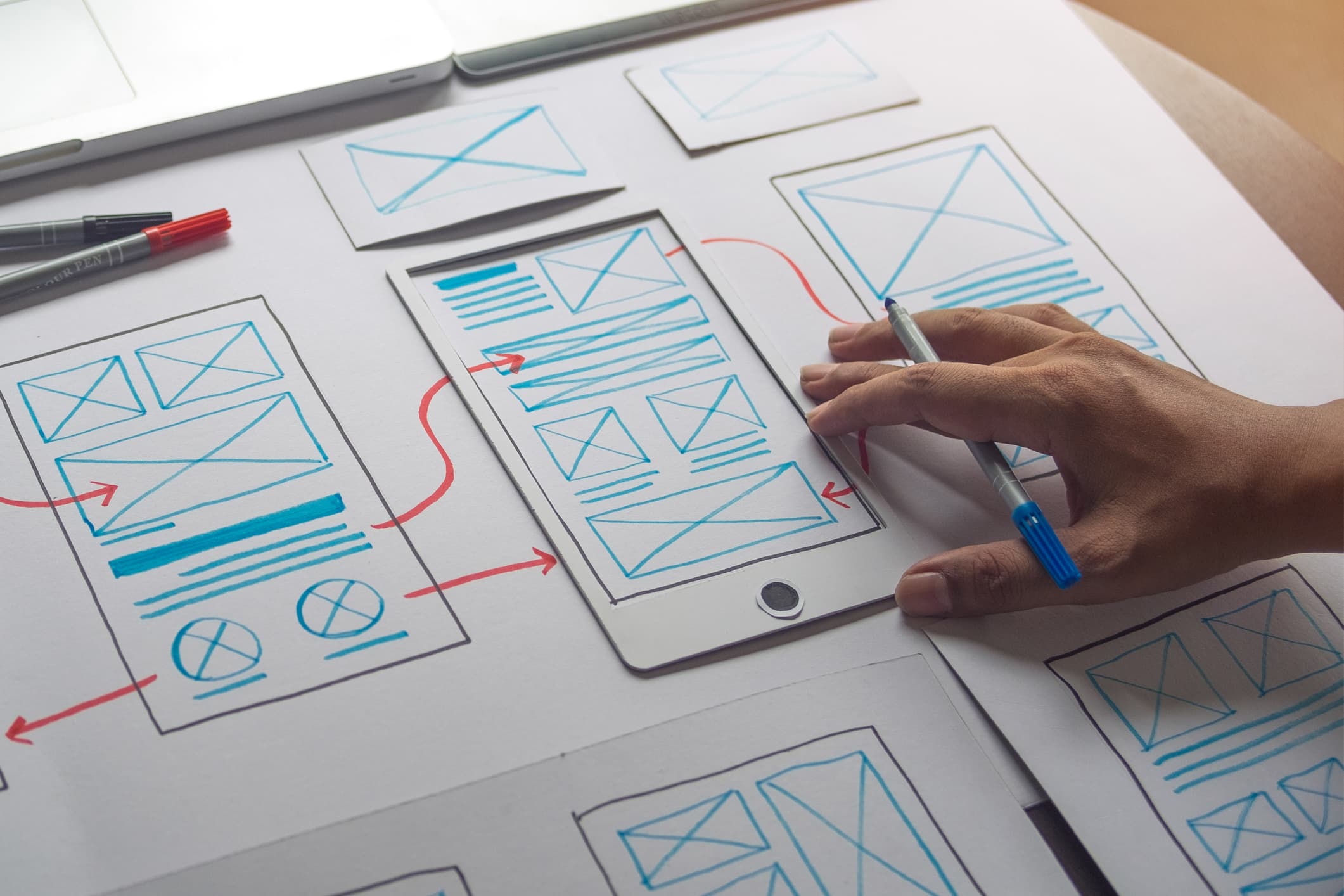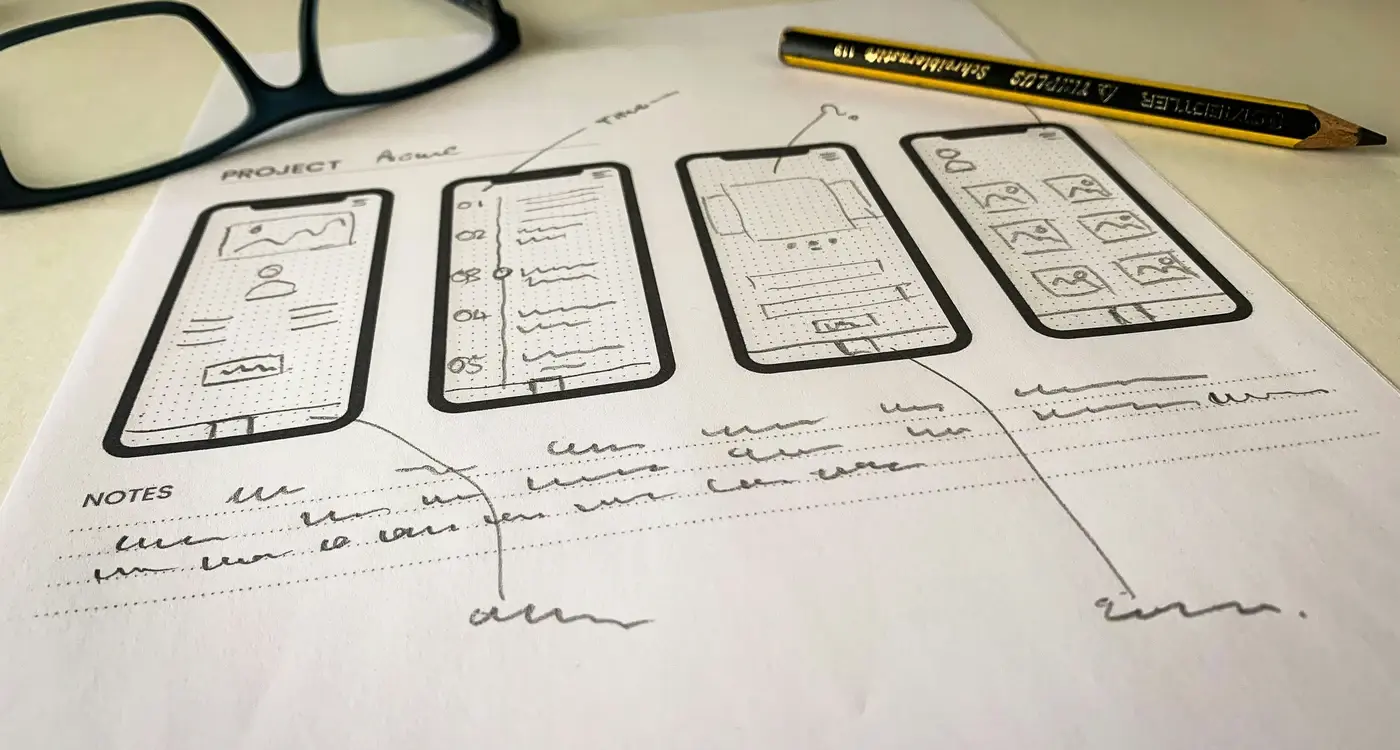From Concept to Launch: A Timeline for Building Your First Mobile App
Embarking on a mobile app development journey can feel like standing at the foot of Mount Everest - exciting yet somewhat overwhelming. Whether you're a startup founder with a groundbreaking idea or an established business looking to go mobile, understanding what lies ahead is crucial for success.
The journey of creating a successful mobile app isn't about reaching the destination quickly; it's about making every step count towards building something truly valuable for your users.
Over our eight years of helping clients transform their app ideas into reality, we've learned that one of the most common questions is: "How long will it take to build my app?" While there's no one-size-fits-all answer, we can provide a comprehensive timeline that breaks down each phase of the mobile apps development process.
Think of building an app like constructing a house - you wouldn't start laying bricks without a proper foundation and blueprint. Similarly, creating a successful mobile application requires careful planning, strategic thinking, and methodical execution. From the initial concept to the final launch, each stage plays a vital role in bringing your vision to life.
In this guide, we'll walk you through the entire journey, offering insights from our experience while helping you understand what to expect at each stage. Whether you're planning a simple productivity tool or a complex social platform, you'll discover the key milestones that will shape your app's development journey and learn how to navigate them effectively.
Understanding Your App Idea
Every great app starts with a spark of inspiration, but turning that initial idea into a viable product requires careful thought and refinement. It's rather like planning to build your dream house - you wouldn't start construction without first understanding exactly what you want and need.
Defining Your Core Purpose
Before diving into the technical aspects, you'll need to clearly articulate what problem your app solves or what value it brings to users. We often see eager entrepreneurs rush past this crucial stage, but taking time here can save months of development later. Think about apps like WhatsApp - at its core, it simply helped people message each other for free, and that clarity of purpose was key to its success.
To help refine your app idea, consider these essential questions:
- What specific problem does your app solve?
- Who is your target audience?
- What makes your app different from existing solutions?
- Which core features are absolutely essential for launch?
- How will users benefit from your app?
Remember, it's perfectly normal to feel overwhelmed at this stage. Many of our most successful clients started with just a rough concept. The key is to be honest about your app's purpose and remain flexible. Your initial idea might evolve as you gather more insights - and that's absolutely fine! Just as Instagram started as a check-in app called Burbn before finding its true calling as a photo-sharing platform, your app concept might need some refinement to reach its full potential.
Planning and Research
Now that you've got your brilliant app idea, it's time to roll up your sleeves and dive into the nitty-gritty of planning and research. Think of this stage as laying the foundation for your dream home - you wouldn't start building without a proper blueprint, would you?
Market Research: Your Crystal Ball
First things first - you'll need to understand your target market inside and out. In our experience with mobile apps development, we've seen countless great ideas falter simply because they didn't solve a real problem for real people. Start by identifying your potential users, their pain points, and how your app will make their lives easier. It's like being a detective, but instead of solving crimes, you're uncovering user needs!
Competitor Analysis: Know the Playing Field
Take a good look at similar apps in the market. What features do they offer? What are their users saying in reviews? What's missing that your app could provide? This isn't about copying - it's about learning from others' successes and mistakes. Remember when Instagram launched as a simple photo-sharing app while others were trying to do everything at once? That focused approach worked brilliantly for them.
During this phase, you'll also want to estimate your budget, timeline, and potential return on investment. Be realistic - most apps take 3-6 months to develop, depending on complexity.
Create a simple survey using Google Forms or SurveyMonkey and share it with your target audience. Their direct feedback during the planning stage can save you countless hours and resources later in development.
Design and User Experience
At this exciting stage, your app begins to take shape visually. Think of it as dressing your app for its first impression - you want it to look smart, feel intuitive, and make users feel at home from the moment they open it.
Creating Your App's Visual Identity
First, we'll develop your app's visual identity, including colour schemes, typography, and branding elements. Just as you wouldn't wear clashing colours to an important meeting, your app's design elements need to work harmoniously together. This process typically takes 2-3 weeks, depending on the complexity of your app.
Mapping the User Journey
Next comes the crucial task of planning how users will navigate through your app. Remember that frustrating time you couldn't find the checkout button on a website? That's exactly what we're trying to avoid here. We'll create wireframes and prototypes that ensure your app is as intuitive as your favourite social media platform.
- User Interface (UI) Design: Creating visually appealing screens and elements
- Wireframing: Sketching the basic layout and navigation flow
- Interactive Prototyping: Building a clickable version for testing
- User Testing: Gathering feedback on the design and experience
- Design Iteration: Refining based on user feedback
During this phase, we'll ensure your app follows platform-specific guidelines (iOS or Android) while maintaining its unique personality. Think of it as teaching your app to speak the local language while keeping its distinct accent. This attention to detail in design and user experience typically takes 3-4 weeks, but it's time well spent - after all, first impressions last!
Technical Requirements
Now that you've got your app idea and design sorted, it's time to roll up our sleeves and dive into the technical nitty-gritty. Think of this stage as choosing the right ingredients before cooking a masterpiece – every decision here will impact your final product.
First things first: you'll need to decide which platform(s) to develop for. While it might be tempting to launch everywhere at once, we've learned from our mobile apps development experience that it's often wiser to start with one platform and expand later. Whether you choose iOS or Android should depend on where your target users are.
The right technical foundation is like building a house - get it wrong at the start, and everything becomes more expensive and complicated to fix later
Essential Technical Considerations
Your app will need a robust backend infrastructure to handle data storage and processing. Will you use cloud services like AWS or Google Cloud? Do you need real-time features that require WebSocket connections? These aren't just technical choices – they'll affect your app's performance and your budget too.
Remember to consider integration requirements as well. Will your app need to connect with social media platforms, payment gateways, or other third-party services? Much like putting together a jigsaw puzzle, each piece needs to fit perfectly with the others.
Security requirements deserve special attention, especially if you're handling sensitive user data. Just as you wouldn't leave your front door unlocked, your app needs proper authentication, data encryption, and secure communication protocols. These aren't optional extras – they're essential foundations of any well-built app in 2025.
Development Phases
Now we're getting to the exciting part where your app starts coming to life! The development phase typically spans 3-6 months, depending on your app's complexity. Think of it like building a house - you need to lay the foundation before adding the walls and roof.
At Glance, we've found that breaking down the development process into distinct phases helps our clients understand where their project stands. Just like how you wouldn't want your kitchen fitted before the walls are up, mobile app development follows a logical sequence.
Core Development Stages
- Alpha Phase: Basic functionality and core features (4-6 weeks)
- Beta Phase: Enhanced features and interface refinement (4-8 weeks)
- Release Candidate: Final polish and optimisation (2-4 weeks)
During the alpha phase, we focus on building your app's foundation - rather like putting together the engine of a car. It might not look pretty yet, but the essential mechanics are taking shape. The beta phase is where we add the bodywork and paint job, so to speak, making everything work smoothly together.
Remember that wonderful feeling when you first learned to ride a bike? That's similar to what you'll experience during development - watching your app evolve from basic functionality to a fully-fledged application is truly exciting. We'll keep you in the loop with regular updates and demos, ensuring everything aligns with your vision.
It's worth noting that development isn't a strictly linear process. Sometimes we need to circle back and refine earlier work as new insights emerge - and that's perfectly normal. The key is maintaining open communication and staying flexible throughout the journey.
Testing and Quality Assurance
Think of testing your mobile app like test-driving a new car - you wouldn't want to discover problems after you've already bought it, would you? In mobile apps development, thorough testing is absolutely crucial to ensure your app performs flawlessly when it reaches your users' devices.
Types of Testing Required
At Glance, we've learned that comprehensive testing involves multiple layers. First, there's functional testing to ensure every button, form, and feature works as intended. Then, we conduct performance testing to check how your app behaves under different conditions - rather like seeing how a car performs in various weather conditions. We also perform compatibility testing across different devices and operating system versions, because let's face it, not everyone has the latest iPhone or Samsung Galaxy.
The Testing Timeline
Quality assurance typically takes about 2-4 weeks, depending on your app's complexity. During this phase, we use both automated testing tools and human testers to catch any issues. Think of it as having both a sophisticated diagnostic computer and an experienced mechanic checking your car - you want both perspectives to ensure everything's perfect.
One often overlooked aspect is user acceptance testing (UAT), where real users try your app in real-world conditions. Their feedback can be invaluable in spotting issues that technical testing might miss, like confusing navigation or unclear instructions.
Consider setting up a beta testing programme with a small group of target users before your full launch. Their real-world feedback can help you catch issues that might not surface in controlled testing environments.
App Store Submission
After months of hard work, you're finally ready to share your app with the world! The app store submission process might seem daunting, but it's really just like preparing for a job interview - you want to present your creation in the best possible light whilst ensuring all the paperwork is in order.
Getting Your Documentation Ready
Both the Apple App Store and Google Play Store require specific documentation. You'll need app icons in various sizes, screenshots of your app in action, a compelling app description, and relevant keywords. Think of this as your app's CV - it needs to be polished and professional. Remember to have your privacy policy and age rating documentation ready too.
Understanding Store Guidelines
Each store has its own set of rules and requirements. Apple is particularly strict about their guidelines - a bit like a posh restaurant with a strict dress code! They typically take 2-3 days to review your app, though it can sometimes stretch to a week. Google Play tends to be more relaxed, with reviews usually completed within 24-48 hours.
One common hiccup we've seen over our years of experience is apps being rejected for simple oversights, like missing information or technical issues. Don't worry though - it's perfectly normal and happens to even the most experienced developers. The key is to carefully read through any feedback, make the necessary adjustments, and resubmit.
Our top tip? Create a submission checklist well in advance. It's much easier to gather all requirements gradually than to scramble at the last minute. Remember, this is the final hurdle before your app reaches its audience - take your time to get it right!
Launch Strategy
After months of hard work in mobile apps development, you're finally ready to share your creation with the world. It's perfectly normal to feel a mix of excitement and nervousness at this stage – we've seen it countless times with our clients, and it's actually a good sign that you care deeply about your app's success.
Pre-launch Essentials
Think of your app launch like opening night at the theatre. Everything needs to be perfectly choreographed. Start by creating a buzz about two weeks before launch through social media teasers, email newsletters, and perhaps even a landing page that lets interested users sign up for launch notifications. Remember to prepare your press kit with screenshots, promotional videos, and a compelling story about your app.
A successful app launch isn't just about the app itself - it's about creating the right moment for your users to discover it
Launch Day and Beyond
On launch day, consider a soft launch in a smaller market first. This approach, similar to how restaurants have 'soft openings', helps you identify any last-minute issues before going fully public. We've found that launching mid-week (Tuesday to Thursday) often works best, as users are more engaged during these days.
Don't forget to have your marketing materials ready to go across different channels. Whether it's social media posts, blog articles, or email campaigns, consistency in messaging is key. Also, ensure your customer support team is prepared for an influx of questions and feedback. The first few weeks after launch are crucial for gathering user feedback and making quick improvements where needed.
Ongoing Support and Updates
Launching your app is just the beginning of its journey. Think of your app as a living, breathing entity that needs constant care and attention to thrive in today's dynamic digital landscape. Just as a garden needs regular maintenance to flourish, your app requires ongoing support to keep your users happy and engaged.
Why Continuous Support Matters
Users expect apps to work flawlessly across all devices and operating systems. When Apple or Google release new updates (which happens quite frequently), your app needs to adapt quickly. We've seen countless promising apps struggle simply because they didn't keep pace with these changes. Regular maintenance helps prevent crashes, security vulnerabilities, and those dreaded negative reviews that can impact your app's reputation.
Planning for the Future
Beyond just fixing bugs, you'll want to plan for feature updates that keep your app fresh and competitive. Listen to your users' feedback - they often have brilliant suggestions for improvements. We recommend setting aside about 15-20% of your initial development budget for the first year of maintenance and updates. This might seem like a significant investment, but it's far less costly than trying to rescue an app that's fallen behind.
Consider implementing analytics tools from day one to track user behaviour and app performance. This data becomes invaluable when deciding which features to enhance or what new capabilities to add. Remember, successful apps like Instagram and WhatsApp didn't become industry leaders overnight - they evolved gradually through consistent updates and improvements based on user feedback and market trends.
Conclusion
Building your first mobile app is quite the journey, rather like planning and executing a challenging road trip. You start with an idea, carefully map out your route through planning and development, and finally reach your destination when your app goes live. As we've explored throughout this guide, successful mobile apps development isn't just about coding - it's about understanding your users, meticulous planning, and maintaining a long-term vision.
Remember, even tech giants like Instagram and WhatsApp started as simple ideas. What set them apart wasn't just their innovative concepts, but their commitment to user experience and continuous improvement. Your app's launch isn't the end of the journey - it's more like opening night at the theatre. The real work of maintaining, updating, and growing your app continues long after the initial applause.
Whether you're a startup founder or an established business looking to expand into the mobile space, understanding this timeline helps set realistic expectations. Most quality apps take between 4-6 months to develop, though this can vary based on complexity and features. The key is to remain flexible and patient throughout the process, focusing on quality rather than rushing to market.
As you embark on your own app development journey, remember that every successful app started exactly where you are now - with an idea and a commitment to making it reality. Take it one step at a time, stay focused on your users' needs, and don't be afraid to adjust your course as you learn and grow. After all, the most successful apps are those that evolve alongside their users' needs.
Share this
Subscribe To Our Blog
You May Also Like
These Related Stories

A CEO’s Guide to Developing a Mobile Application

From Concept to Launch: A Complete Mobile App Building Guide





